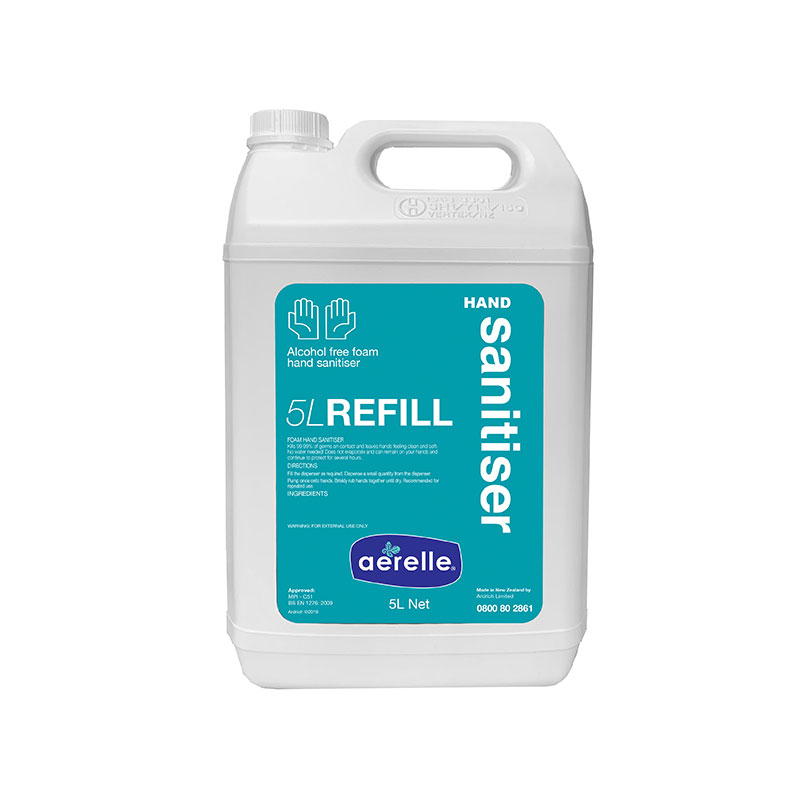Aerelle AF is available in various dispensing forms to suit lifestyle or applications. It may be dispensed in easy dispersable foam or a convenient spray. Dispenser options include pocket size to commercial wall mount, refillable and pouch refills.
The benzalkonium chloride (BAC) based formulation is ideal for environments where a non-alcohol hand sanitiser is required. Aerelle AF is safe, effective and non-irritating. It kills 99.99% of most common germs that may cause illness and is dye and fragrance-free. It is compatible with vinyl, nitrile and latex gloves.
Non – alcohol hand sanitizers are most often found in prisons, correctional facilities and schools where regulations restrict the use of alcohol-based hand sanitisers.
This sanitiser is perfect for use in facilities that require a non-alcohol solution.
About Aerelle AF’s active ingredient – Benzalkonium chloride
Benzalkonium chloride (BAC) is a major non-alcohol-based active ingredient used for clinical, food line, and domestic household biocides. A biocide is a general term for a chemical agent, that may be applied topically in/on living tissue (antiseptic) or on inanimate objects (disinfectant), in order to inhibit the growth of or
kill microorganisms.
Antiseptic hand sanitisers have been shown to subdue the prevalence of the common cold, acute respiratory syndromes, gastroenteritis, viral influenza, and more. Similarly, they are important in limiting hospital acquired (nosocomial) infections by Pseudomonas aeruginosa, methicillin-resistant Staphylococcus aureus (MRSAs), and vancomycin-resistant Enterococcus (VREs). For such preventative measures, there are a variety of hand sanitisers available with alcohol-based and alcohol-free antiseptic agents including ethanol and benzalkonium chloride. Despite speculations of evolving resistance, BACs are extensively used biocides especially potent against enveloped microorganisms like Gram-positive bacteria and some viruses.
Susceptible Microorganisms.
The key component of BAC’s antimicrobial activity is membrane destruction. This is most effective against Gram-positive bacteria, some Gram-negative bacteria, some enveloped viruses, fungi, yeasts and protozoa due to varying surface structures.
Non-sporulating Gram-positive bacteria:
Staphylococcus aureus is a Gram-positive bacterium that can survive on antiseptic-free hands for at least 150 minutes, allowing it to spread and persist as a leading cause of nosocomial infections. However, S. aureus is readily killed with BACs because their cell walls are chiefly composed of slightly negatively- charged peptidoglycan and teichoic acids. These surface structures also lack effective permeability properties and allow uptake of more BACs and other antimicrobial substances.
Enveloped viruses:
Some viruses require a lipid envelope, which serves a dual function: first, as a protective barrier from harsh environmental conditions of pH or desiccation, and secondly as an undesirable target for BAC-based antiseptics.
Therefore, enveloped viruses like human immunodeficiency virus (HIV), hepatitis B virus (HBV) influenza virus, measles virus, vaccinia virus, meningopneumonitis virus, Semliki Forest virus, canine distemper virus, rabies virus, fowl laryngotracheitis, and feline pneumonitis virus are all susceptible to BACs.



